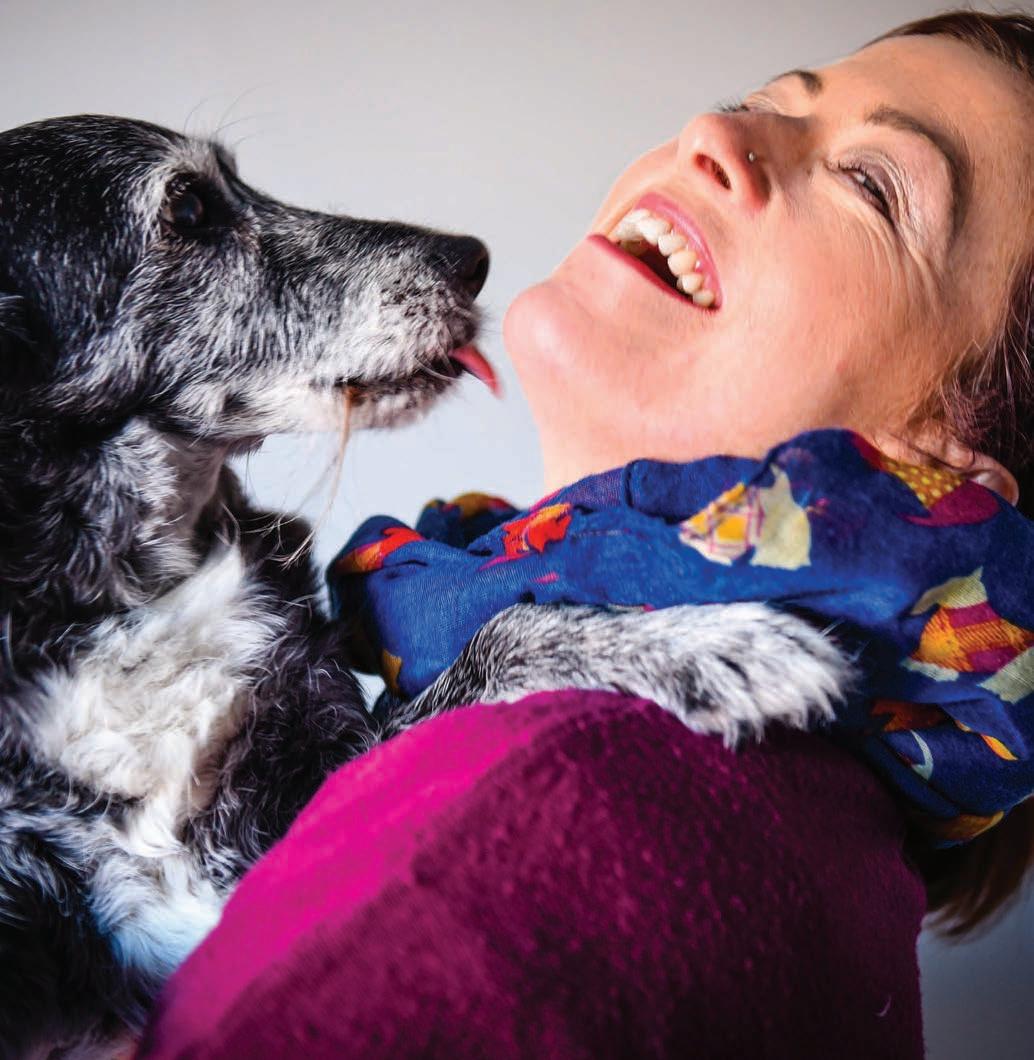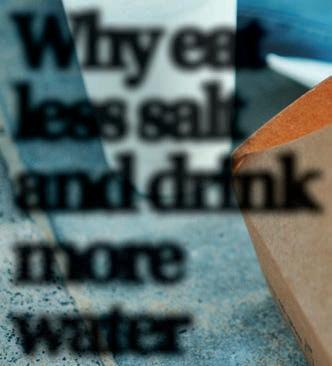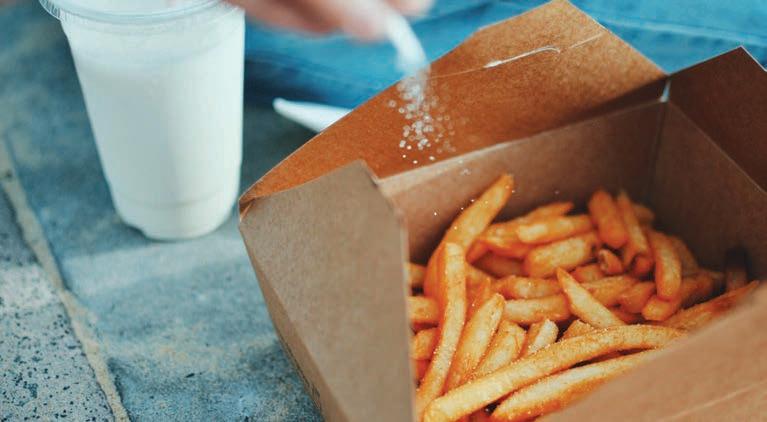
6 minute read
Health & Science

Anyone who knows dogs knows there are huge differences among these fourlegged creatures, even among the same litter and other siblings and within breeds. It’s very harmful to dogs and dog-human relationships when dog-appropriate and context-appropriate behaviours are mislabeled and misinterpreted and referred to as being abnormal. ere is no ‘universal dog’— dogs are individuals and these differences must be honoured and factored into teaching a dog to do what we want them to do.
Advertisement
Dogs need real love, not tough love that they won’t understand; it confuses them with mixed messages and stresses them.
Say goodbye and hello to your dog and whisper “good dog” even when they haven’t done anything to merit the praise.
During the pandemic of the last two years many people re-homed a rescue dog, although some people didn’t last the course and were wont to send the poor creatures back or basically abandon them. ese are egregious myths about rescue dogs; rescue dogs aren’t mis ts. In fact, rescue dogs are not necessarily quirkier than other dogs, they can be wonderful companions, and there can be mutual bene ts for the dogs and their humans.
But back to that tough love and its wrong ‘use’. Tough love is de ned in many di erent ways, but it boils down to holding an individual responsible for their actions or lack thereof, and, in a dog’s case, ignoring them or possibly turning the tables on them and making them feel they have to earn hugs, rewards, and love.
One de nition reads: “Tough love is an example of unconditional love for your partner. Tough love is about recognising faults, overcoming them as a couple, and


We are by now all only too familiar with the numerous studies and media coverage full of warnings on how sugar, carbohydrates, saturated fat and lack of exercise contribute to obesity. And so, so many people are still overweight or obese in large part because of the classic Western diet and lifestyle.
Obesity, too, leads to related conditions such as diabetes, high blood pressure and chronic kidney disease. at said, relatively little has been said about how lack of hydration and excessive salt intake. Both are known, scienti cally, to contribute to obesity.
Nature provides a clue to the role these factors play with the desert sand rat Psammomys obesus, a halfpound rodent with a highpitched squeak that lives in the salty marshes and deserts of Northern Africa.
It survives, barely, by eating the stems of Salicornia – the glasswort – a plant that looks

How tough love is not the answer for your rescue dog
growing stronger together through honest communication about boundaries While this might be true for humans who can talk about what’s going on, it’s unlikely dogs will understand why they are being treated this way. is isn’t to say dogs don’t have highly developed cognitive capacities or they’re not smart enough, but rather they can’t talk with their human(s) about what’s happening and why.
It’s very confusing and
Why eat less salt and drink more water
a bit like asparagus.
Although low in nutrients, the glasswort’s eshy, succulent sap is lled with water that’s rich in salt, at concentrations as high as what’s found in seawater. Recent studies have provided new insights into why the desert sand rat might crave the salty sap of glasswort. Although this has not yet been proven speci cally in the sand rat, it is likely that a high-salt diet helps the sand rat convert the relatively low amount of carbohydrates it’s ingesting into fructose, a type stressful for them — you say you love them, and they think you do, or at least you did but they may wonder why you are treating them as if you don’t. Simply put, they don’t get it. When dogs and humans are able to agree about what you
of sugar that occurs naturally in fruits, honey and some vegetables. is helps the animal survive when food and fresh water are sparse. is is because fructose activates a ‘survival switch’ that stimulates foraging, food intake and the storwant them to do, it’s a win for all.
For dogs, tough love is a misguided mindset. Besides, why would anyone want to live with an unhappy dogwho is living in chronic states of fear, anxiety, or uncertainty?
age of fat and carbohydrates that protect the animal from starvation. However, when the rat is brought into captivity and given the common rodent diet of about 50% carbohydrates, it rapidly develops obesity and diabetes. But if given fresh vegetables low in starchy carbohydrates, the rodent remains lean.
As mentioned, fructose, a simple sugar, appears to have a key role in activating this survival switch that leads to fat production.
Small amounts of fructose, like that found in an individual fruit, are not the problem – rather it is excessive amounts of fructose that are problematic for human health.
Most of us get our fructose from table sugar and highfructose corn syrup. Intake of these two sugars totals approximately 15% of calories in the average American diet. ese sugars encourage people to eat more, which
While training is the best method to use to teach a dog what you would like them to do, individual di erences must be respected — there are few, if any, one-size- tsall explanations of what’s happening and what needs to be adjusted, and a dog’s emotional state must also be considered.
If your dog likes to be hugged, hug them. Say goodbye and hello to your dog when leaving and reuniting, and say “good dog” simply because they’re alive and it’s critical to reassure them that they are loved. is also af rms that they are important to you and they don’t need to please you to earn the praise.
And play with them and have fun together.
Many people are relinquishing their pandemic rescue dog because the dog didn’t turn out to be the individual they wanted or they didn’t realise what a huge decision it was to bring a dog into their lives. When the bond with your dog is broken and you’ve reached the point of “tough love,” is that perhaps a harbinger?
In an ideal society, we would have a human-dog set-up to help people nd the best dogs for their lifestyles.
Choosing to take a dog into your home and heart is a huge responsibility.
It should mean you’re offering a forever home with lots of compassion, respect, and love. However, there are scenarios in which rehoming is the best option for both human(s) and dog(s).
You might also reevaluate whether there are options to help you keep your dog in your home.
Many humane societies and rescue groups have information on rehoming or can directly provide nancial as sistance (for your dog’s food, veterinary care, etc.), access to resources to address behaviour issues, temporary housing, and much more.
Paws for thought...
can lead to weight gain, fat accumulation and prediabetes.
Our bodies also make fructose on their own – and experimental studies suggest it may be enough to trigger the development of obesity.
Since fructose is made from glucose, production of fructose increases when blood glucose levels are high. is process happens when we eat a lot of rice, cereal, potatoes and white bread; those are carbs that rapidly release glucose into the blood rapidly.
And notably, fructose production can also be stimulated by dehydration, which drives fat production.
Fat has two major functions. e rst one, which is well known, is to store calories for a later time when food is unavailable.
And, the other major but lesser-known function of fat is to provide water.
So easy on the salt and go big on the water.







